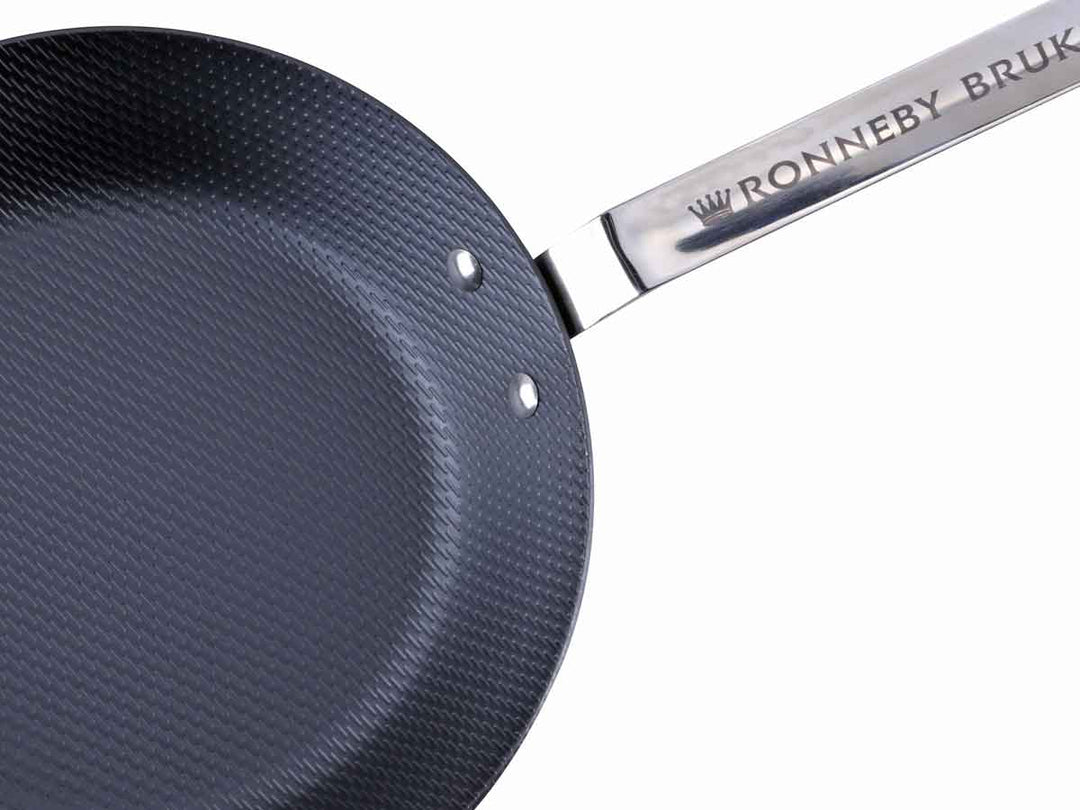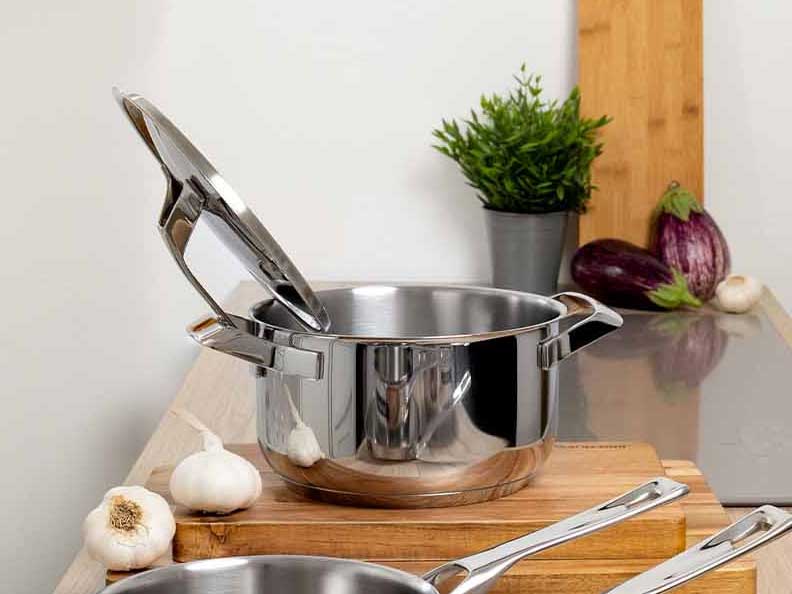ceramic (non-stick) coatings
Ceramic coatings have been in widespread use since the beginning of the 21st century. Ceramic coatings were originally developed as a cost-effective substitute for enamel that can also be processed at low temperatures, but the embedding of a non-stick component brought them into focus primarily as an alternative non-stick coating.
Ceramic coatings were initially seen euphorically as a replacement for the classic non-stick coating based on PTFE, but the enthusiasm leveled off somewhat in the years that followed and ceramic coatings are now more of an alternative to classic non-stick coatings (PTFE), but could not replace them for a variety of reasons.
What is a ceramic coating?
Although the term "ceramic" has become established for ceramic coatings, when using and handling ceramic-coated cookware, you should not think of household items made of ceramic or porcelain. The water-based ceramic coating is liquid on the metal cookware (aluminium, stainless steel, cast iron or steel ) and then dried at relatively low temperatures in a special oven, where it hardens like glass In contrast to this, classic ceramics such as plates are fired at high temperatures of around 1,000° C.
Ceramic coatings come from so-called sol-gel processes. These wafer-thin hybrid coatings combine the properties of organic and inorganic materials at the molecular level. The ceramic part of the coating achieves a hard and resistant surface with good thermal behavior, and the embedded silicone fluid achieves an attractive non-stick effect.
Do ceramic coatings contain PTFE?
No. Ceramic coatings are not classic non-stick coatings and therefore do not contain PTFE.
Do ceramic coatings tolerate overheating better than PTFE non-stick coatings?
Yes and no. It is true that the ceramic component of a ceramic coating can withstand very high temperatures of 400-450°C. BUT: The silicone component responsible for the non-stick effect is irreversibly destroyed at around 250-300°C. A ceramic-coated frying pan that has been overheated sometimes looks perfectly fine, but the next time you fry it, you notice that the non-stick effect is gone.
Apart from that, the temperature limits mentioned are only relevant when using the cookware if it is heated up empty, clearly contrary to any instructions for use. If, on the other hand, there is oil/fat in the cookware, it will start to smoke between 150-250° C, depending on the type, thus giving a clear warning of overheating.
Are ceramic coatings good for everything?
No, they are not. Similar to non-stick (PTFE) coatings, ceramic coatings can resent excessive heat. With ceramic coatings, this manifests itself in a sudden reduction in the non-stick effect. As a rule of thumb, as with PTFE-based products, ceramic-coated cookware tends to be intended for cooking at medium temperatures. When it comes to searing at maximum heat, ceramic coatings are less suitable in terms of product longevity; here preference should be given to an uncoated product.
How long does a ceramic coating last?
That mainly depends on how you treat it. Visible wear (scratches, discoloration) is usually less of a problem with ceramic coatings in terms of durability. Rather, it is a decreasing non-stick effect that is perceived by the user as wear and tear. By always gently cleaning and completely avoiding overheating, you can significantly increase the service life of ceramic-coated cookware.
How do I clean a ceramic coating?
All you need to clean is hot water, some washing-up liquid and a soft dishcloth. First rinse any remaining small pieces of food out of the cookware. It is best to soak stubborn residues and then remove them, if necessary with the help of a soft dish brush. Then put some washing-up liquid on the cloth and gently wipe the entire cooking surface. Then clean the outside in the same way. Finally, rinse with fresh water and then dry the cookware thoroughly.
Are ceramic coatings dishwasher-safe?
We generally advise against cleaning ceramic-coated cookware in the dishwasher, because the non-stick effect of the ceramic coating suffers through the dishwasher. For this reason, ceramic-coated cookware is usually not approved for dishwasher cleaning by the manufacturer; should this be the case in exceptional cases, we still recommend cleaning by hand.
Is rubbing the ceramic coating with a dry cloth enough?
No, this is not recommended, because a thin film of grease usually remains on the coating, which can thicken and negatively affect the non-stick properties.






